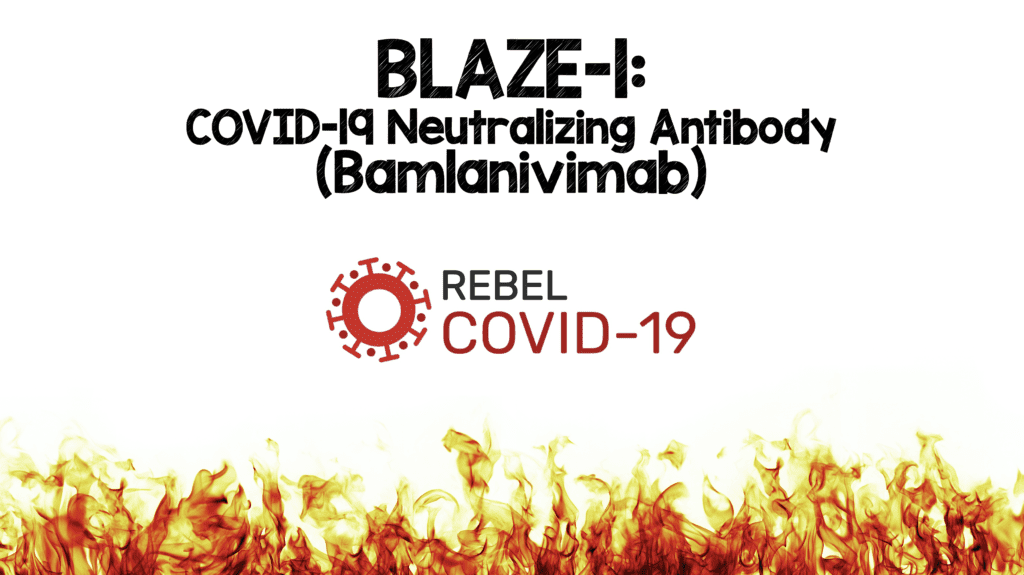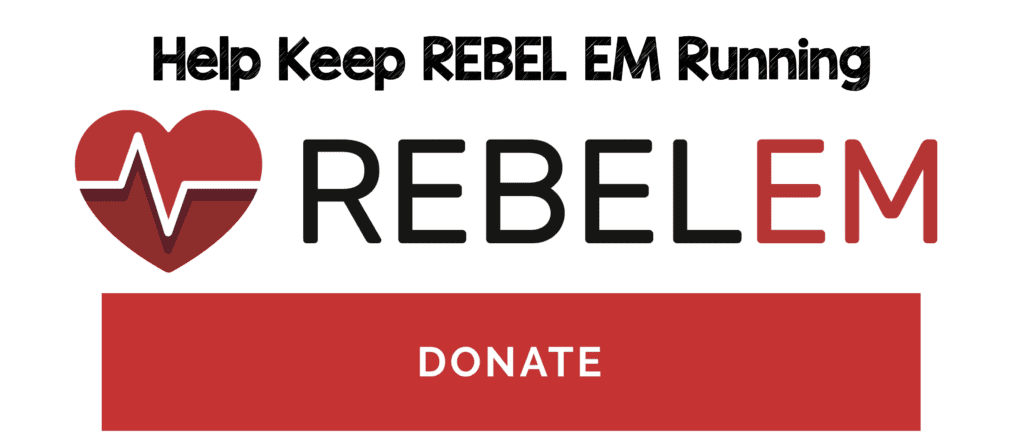
 Background: Throughout the COVID19 pandemic, massive efforts have been invested on the research of effective therapeutics. Much of the research looks at repurposing older treatments (i.e. antimalarial drugs, antiviral agents, interleukin blockers and convalescent plasma therapy). There have been no large randomized, controlled trials of targeted treatments specific to SARS-CoV-2. LY-CoV555 is an anti-spike protein neutralizing monoclonal antibody that binds with high affinity to the receptor-binding domain of SARS-CoV-2. Its role in treatment of COVID19 is unclear.
Background: Throughout the COVID19 pandemic, massive efforts have been invested on the research of effective therapeutics. Much of the research looks at repurposing older treatments (i.e. antimalarial drugs, antiviral agents, interleukin blockers and convalescent plasma therapy). There have been no large randomized, controlled trials of targeted treatments specific to SARS-CoV-2. LY-CoV555 is an anti-spike protein neutralizing monoclonal antibody that binds with high affinity to the receptor-binding domain of SARS-CoV-2. Its role in treatment of COVID19 is unclear.
Paper: Chen P et al. SARS-CoV-2 Neutralizing Antibody LY-CoV555 in Outpatients with COVID-19. NEJM 2020. PMID: 33113295
Clinical Question: What is the efficacy and safety of LY-CoV555 (bamlanivimab) in patients with recently diagnosed mild or moderate COVID-19 in the outpatient setting?
What They Did:
- Blocking Viral Attachment and Cell Entry with SARS-Co-V-2 Neutralizing Antibodies (BLAZE-1)
- Ongoing Phase 2, randomized, double-blind, placebo-controlled trial of outpatients recently diagnosed with mild or moderate COVID-19
- Conducted at 41 centers in the US
- Randomized to:
- LY-CoV555: Single IV infusion over 1 hour in one of three doses (700mg, 2800mg, or 7000mg)
- Placebo
- Results of the preplanned interim analysis as of Sept 5th, 2020
Outcomes:
-
Primary (Authors only report 1st primary outcome [Clinical Trials]):
- Change from baseline in the viral load at day 11
- Percentage of participants who experience COVID-19-related hospitalization or death
- Percentage of participants with SARS-CoV-2 viral load greater than a prespecified threshold
-
Secondary:
- Safety
- Symptom severity
- Hospitalization
- Time points for viral clearance
Inclusion:
- Age ≥18 years
- Not hospitalized
- Had one or more mild or moderate COVID-19 symptoms
- Fever
- Cough
- Sore Throat
- Malaise
- Headache
- Muscle Pain
- GI symptoms
- Shortness of breath with exertion
Exclusion:
- SpO2 ≤93% on RA
- P/F ratio <300
- RR ≥30
- HR ≥125
- Require mechanical ventilation or anticipated need for mechanical ventilation
- Known allergies to any of the components use in the formulation of interventions
- Hemodynamic instability requiring use of pressors within 24hrs of randomization
- Suspected or proven serious, active bacterial, fungal, viral, or other infection (besides COVDI-19)
- Comorbidity requiring surgery within <7d
- Pregnant or breast feeding
- History of convalescent COVID-19 plasma treatment
- Had received treatment with a SARS-CoV-2 specific monoclonal antibody
- Participated within the last 30d in a clinical study involving an investigational intervention or received investigational intervention
- History of positive SARS-CoV-2 test
Results:
- 452 patients met inclusion criteria and were randomized
- Patients received infusion within a median of 4 days after symptom onset
- >80% of patients had only mild symptoms
-
Mean Decrease from Baseline of Viral Load at Day 11 Compared to Placebo:
- Mean decrease from baseline in the log viral load for entire population was -3.81 (Elimination of >99.97% of viral RNA)
- Baseline mean 6.36
- Day 11 mean 2.56
- 700mg: -3.67 (Difference -0.20; 95% CI -0.66 to 0.25; p = 0.38)
- 2800mg: -4.00 (Difference -0.53; 95% CI -0.98 to -0.08; p = 0.02
- 7000mg: -3.38 (Difference 0.09; 95% CI -0.37 to 0.55; p = 0.70)
- Pooled Doses: -3.70 (Difference -0.22; 95% CI -0.60 to 0.15)
- Study powered to look for a reduction of 0.9 logs of virus (none met this)
- Mean decrease from baseline in the log viral load for entire population was -3.81 (Elimination of >99.97% of viral RNA)
- On days 2 to 6 patients who received LY-CoV555 had a slightly lower severity of symptoms compared to placebo
- Percentage of Patients Requiring COVID-19-Related Hospitalization:
- LY-CoV555: 1.6%
- 700mg: 1.0%
- 2800mg: 1.9%
- 7000mg: 2.0%
- Placebo: 6.3%
- LY-CoV555: 1.6%
- Serious Adverse Events:
- LY-CoV555: 0%
- Placebo: 0.7%
- Prevalence of Variants:
- LY-CoV555: 8.2%
- Placebo: 6.1%
Strengths:
- Randomized, double-blind, placebo-controlled trial
- Groups were well balanced in regard to risk factors at the time of enrollment (i.e. disease status, no of days since onset of symptoms, and mean viral load)
- Enrolled patients with recent disease onset to evaluate the effect of early intervention (This is where medications attacking the virus should be most effective)
Limitations:
- Funded by Eli Lilly the creator of the neutralizing antibody, which does not negate the results, but should give some level of pause in interpreting the results
- Appears to be a convenience sample based on how few patients are in the study
- Viral load and hospitalization are a surrogate marker, subjective outcome, and not a patient-oriented outcome
- Nasopharyngeal viral load has not been validated as a predictor of clinical disease course
- There are 3 primary endpoints in the author’s proposal but the authors only report on one of them
- Trial not large enough to comment on safety
Discussion:
- Biologic Plausibility Issue: Why would the middle dose be more effective than the higher dose? It is reasonable that the higher dose would have more side effects (although it doesn’t appear to) but here, the middle dose was better at clearing virus. This makes no sense and speaks to the randomness of this finding
- Although it looks like there is only 1 primary outcome, there are actually 3 primary outcomes for each dose. This is 9 primary outcomes, with none of the 9 found to be significant (looking for reduction of 0.9 logs of virus)
- Eli Lilly, the maker of bamlanivimab halted the ACTIV-3 trial early due to futility (Press Release HERE)
- In this interim analysis there were no deaths reported, and since most ED visits resulted in hospital admissions, ED visits and in-patient hospitalization were combined into a composite outcome of hospitalizations. This is a bizarre generalization which doesn’t apply to the patients we see (i.e. many patients go home and are not admitted)
- Viral loads at day 11 (primary outcome) were lower than placebo in the 2800mg dose, but a decreased viral load at day 11 was also substantially reduced from baseline in the majority of patients including those in the placebo group
- Patients with a higher viral load on day 7 had a higher rate of hospitalization than those with better clearance of virus on day 7. This delayed viral clearance was observed in patients with more severe disease
- In subgroup analysis of patients aged ≥65 years or having a BMI ≥35 the percentage of hospitalization was 4.2% in the LY-CoV555 group and 14.6% in the placebo group
- The safety profile of patients who received LY-CoV555 was similar to that of placebo-treated patients (though the trial is too small to make any real comments on this)
- On November 9th, 2020, bamlanivimab received emergency use authorization (EUA) from the US FDA (Link is HERE)
Author Conclusion: “In the interim analysis of a phase 2 trial, one of three doses of neutralizing antibody LY-CoV555 appeared to accelerate the natural decline in viral load over time, where-as the other doses had not by day 11.”
Clinical Take Home Point: How the results of this pre-planned interim analysis of LY-CoV555 compared to placebo got emergency use authorization is bizarre and confusing. It appears that by day 11 most of the virus is cleared in the placebo group anyways and with so many primary outcomes (3 for each dose) the finding that the authors state is significant, is actually not (study powered to look for reduction of 0.9 logs of virus of which none of the doses met this). Safety cannot be demonstrated in such a small study and at best this is a preliminary dose finding study. Yet here we are, with some centers, including mine, now using this medication that is not proven.
References:
- Chen P et al. SARS-CoV-2 Neutralizing Antibody LY-CoV555 in Outpatients with COVID-19. NEJM 2020. PMID: 33113295
For More Thoughts on This Topic Checkout:
- PulmCrit: I’m So Confused About Bamlanivimab
Post Peer Reviewed By: Anand Swaminathan, MD (Twitter: @EMSwami)
The post BLAZE-1: COVID-19 Neutralizing Antibody (Bamlanivimab) appeared first on REBEL EM - Emergency Medicine Blog.


